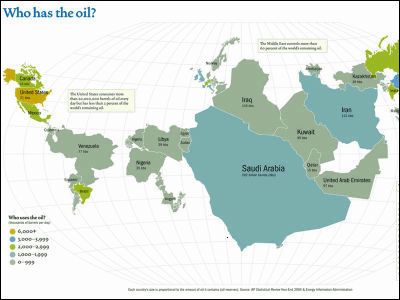Graphically show how the increasing population of the world will change by 2100

ByMK Luo
It was long ago that it was said that "the population of the earth is 5 billion people", it is long before, as of April 2017 it is estimated that some 7.4 billion people live on Earth. It is clear that most of them are concentrated in the Asian region, but according to the UN population growth forecast up to 2100, the population balance in the future is expected to change drastically.
Animation: The World's Population in 2100 by Region
http://www.visualcapitalist.com/animation-world-population-2100-region/
German geographerSimon KuestenmacherBased on the data of the population department of the United Nations Economic and Social Affairs Bureau (DESA), which is the secretariat of the UN Population Development Committee in the United Nations, he explained how the regional population distribution balance of the world changes from 1950 to 2100 We publish it by making a graph as shown below that shows whether or not to do.

ByVisual Capitalist
The world population as of 1950 is 2.6 billion people. The largest population in Asia is 55%. Europe (22%), Africa (9%), North America (7%), Latin America (7%), Oceania (1%) and so on.

By 1990 the population reached 5 billion people. The main factor of the increase was the population expansion in the Asian region, which accounted for 60% of the total. Also, you can see that the difference between Europe and Africa is narrowing almost in parallel, and that Latin America is pulling away from North America.

In 2010 the population will be 7 billion people. Asia has remained unchanged at 60%, but Africa has exceeded Europe and reached second place, 15%.

Asia's momentum will decline in 2030, the proportion will begin to decline at 61% peak. The world population reached 8.6 billion people, and Africa will occupy the first 20% level for the first time.

And in 2060, at last the earth's population reached 10 billion people. Asia's momentum has further weakened, African forces make a breakthrough. And the momentum in Europe and North America is steadily decreasing. It is also possible that the growing problem of the food crisis caused by the population of the earth has become a big problem at this time. A lot of research has been done even in 2017, but what kind of measures are actually taken is a very worrisome point.

In 2100, the population increased to 11.3 billion people. The difference between Asia and Africa is further reduced, and it turns out that the population balance of the world enters "Asia-Africa two strong era".

The increase in population can be said almost synonymously with economic development. From the graph, it can be said that the economic center as of 2100 moved to Asia and Africa, and it can not be said that there is no choice but to think that there is a strong momentum in Africa. It seems that there is almost no mistake that it will become obsolete with current common sense, so it seems that you will be asked how you should respond in the coming age.

ByEmpiredude 1
Related Posts:
in Note, Posted by darkhorse_log







